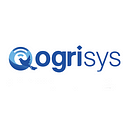Empowering the IoT Revolution: The Promise of WIFI HaLow Technology
When discussing wireless network connections, it is evident that WiFi has become an indispensable part of our daily lives, carrying more than half of the internet traffic and being widely used in various settings such as homes, schools, and entertainment venues. However, despite the prevalence of protocols like WiFi 4, WiFi 5, and WiFi 6, with the rapid growth of the Internet of Things (IoT), we must reconsider the limitations of traditional WiFi in meeting the demands of these emerging technologies.
Emerging business IoT models pose higher requirements for remote connectivity and low power consumption. This demand has driven the need for a new WiFi protocol, namely WiFi HaLow, sometimes pronounced as “HEY-low.”
The WiFi HaLow protocol was initially approved by the IEEE 802.11ah working group in 2016 and was named WiFi HaLow by the WiFi Alliance. It is a low-power, long-range, and more versatile version of WiFi. By addressing gaps in WiFi technology, WiFi HaLow is designed to meet the specific requirements of IoT devices.
Compared to traditional WiFi, WiFi HaLow has many significant differences:
Highly scalable solution:
A single WiFi HaLow access point can address up to 8191 devices, more than four times that of traditional WiFi access points. In the foreseeable future, WiFi HaLow is capable of connecting every LED bulb, light switch, smart door lock, motorized curtain, thermostat, smoke detector, solar panel, security camera, or any imaginable smart home device. While a typical home WiFi router generally supports dozens of devices, when deployed by broadband service providers in homes, a single WiFi HaLow access point can become a scalable platform for providing additional security and utility management devices and services. Furthermore, multiple signaling options reduce the overhead required for managing and controlling a large number of HaLow devices, minimizing signal conflicts and allowing active devices to release radio waves for faster transmission of more data at the maximum achievable MCS rate.
Similar to traditional WiFi, HaLow can automatically adjust bandwidth based on signal integrity and distance from the access point. The star-shaped network topology, excellent penetration rate, extensive coverage, and significant capacity of WiFi HaLow liberate connections from mesh networks that are challenging to deploy and bandwidth-restricted. This simplifies network installations and maximally reduces overall deployment costs.
Low Power Consumption:
WIFI HaLow requires significantly less power compared to traditional WiFi. While traditional WiFi operates in wide frequency bands such as 2.4 GHz, 5 GHz, and 6 GHz, enabling fast transmission of high-definition video content and downloading large documents, these WiFi connections have a limited effective range and quickly deplete the battery power, requiring frequent charging or battery replacement. However, WiFi HaLow prioritizes energy efficiency, incorporating low-power technologies and various complex sleep modes specified by the IEEE 802.11ah standard. This allows HaLow devices to remain in an extremely low-power state for extended periods, conserving battery energy. Therefore, for energy-constrained Internet of Things (IoT) devices, WiFi HaLow is a better choice, enabling them to operate for more extended periods.
Broader Coverage Range:
The frequency range covered by the 802.11 standard is extensive, spanning from sub-GHz to millimeter-wave (mmWave). Wi-Fi HaLow stands out as the first Wi-Fi standard operating in the unlicensed sub-GHz frequency band. It offers a wide range of data rates, from a few hundred kb/s to several tens of Mb/s, and transmission distances ranging from tens of meters to over one kilometer.
The sub-1 GHz signals of Wi-Fi HaLow use narrower channels, ranging from 1MHz to even narrower, in comparison to the traditional 20MHz channels of conventional Wi-Fi. The lower thermal noise in these channels translates to a 20-fold bandwidth coefficient, resulting in a 13 dB improvement in the link budget. In comparison to traditional 2.4 GHz Wi-Fi, RF frequencies between 750 MHz and 950 MHz require an additional 8 dB-9 dB link budget, effectively reducing free-space transmission losses. Additionally, the Wi-Fi HaLow protocol introduces a range-optimized modulation and coding scheme (MCS10), providing an additional 3dB improvement in the link budget.
In summary, Wi-Fi HaLow achieves a significant 24dB improvement in the link budget compared to traditional 2.4GHz IEEE 802.11n (Wi-Fi 4). When compared to higher frequency and wider bandwidth protocols such as 802.11ac (Wi-Fi 5) and 802.11ax (Wi-Fi 6/6E), Wi-Fi HaLow’s link budget advantage is further enhanced, especially when utilizing the broader spectra of the 5GHz and 6GHz frequency bands. This explains why the transmission distance of Wi-Fi HaLow signals is ten times that of traditional Wi-Fi, without the need for network extenders.
Security:
WIFI HaLow provides robust security features. As a inherently secure wireless protocol, WIFI HaLow supports the latest WIFI authentication standards (WPA3) and Over-The-Air (OTA) AES encryption, enabling secure OTA firmware updates with its data rates. Additionally, it supports native IP, indicating that it can communicate directly with the internet, making it easier for Internet of Things (IoT) devices to establish connections with cloud services.
In general, WIFI HaLow is a protocol specifically designed to meet the requirements of Internet of Things (IoT) devices. Its characteristics, including low power consumption, broader coverage, enhanced versatility, and robust security features, position it as an ideal solution for the continually growing demands of the IoT. We believe that, with the continuous development of the Internet of Things, WIFI HaLow is poised to become the preferred wireless technology for connecting various smart devices in the future. At this crucial juncture in the era of transformation, as experts in the field of wireless communication, QOGRISYS has been dedicated to the WIFI industry. Through ongoing innovation and the adoption of the latest WIFI HaLow technology, we strive to synchronize with societal development, better meet the evolving needs of emerging IoT business models, and bring greater benefits to our society and economy.
